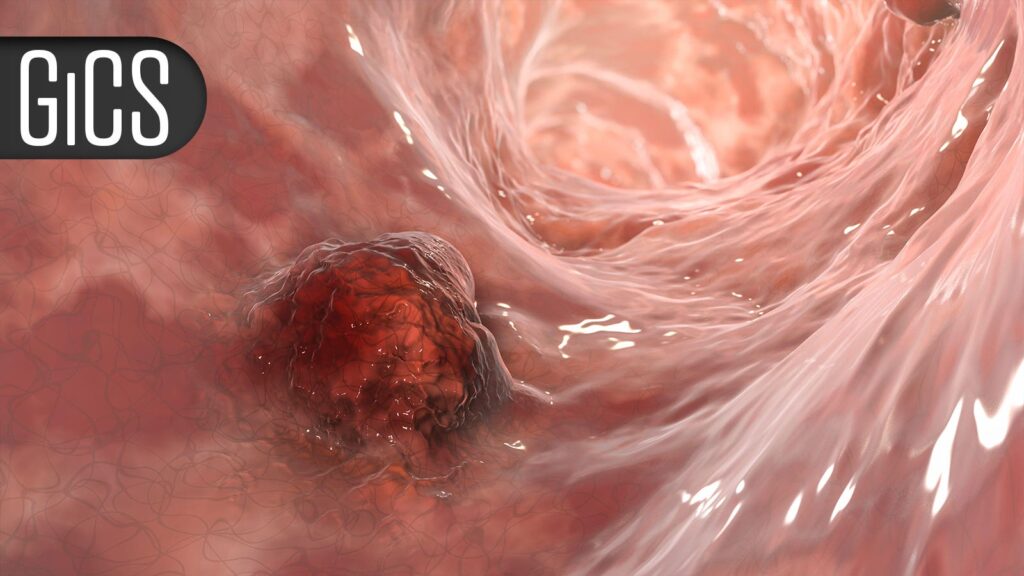[ad_1]
SAN FRANCISCO — Progression-free survival (PFS) in gastroenteropancreatic neuroendocrine tumors (GEP-NETs) more than doubled with the addition of the somatostatin analog (SSA) lanreotide (Somatuline Depot) to everolimus (Afinitor), a study from Japan showed.
Median PFS improved from 11.5 months with single-agent everolimus to 29.7 months with the addition of lanreotide. Objective responses occurred about three times as often with the combination. Subgroup analyses showed a consistent advantage for the combination.
A preliminary analysis of overall survival (OS) showed that the median value had yet to be reached in either treatment group, but 1-year OS was similar in the two groups, said Susumu Hijioka, MD, PhD, of the National Cancer Center Hospital in Tokyo, during a press briefing prior to the American Society of Clinical Oncology (ASCO) Gastrointestinal Cancers Symposium.
“Everolimus plus lanreotide has the potential to become a new standard first-line treatment for patients with unresectable or recurrent GEP-NETs, a poor prognostic population,” said Hijioka.
The study furthered investigation of two drugs that already have approved indications in GEP-NETs, noted ASCO expert Laura Vater, MD, MPH, of the Indiana University Simon Comprehensive Cancer Center in Indianapolis.
“While lanreotide and everolimus have each previously demonstrated the ability to extend progression-free survival in patients with gastroenteropancreatic neuroendocrine tumors, combination treatment of the two together was previously understudied,” Vater said in written comments submitted for the press briefing. “Establishing this new treatment option benefits patients by expanding their therapeutic choices and potentially improving their prognosis and quality of life.”
Both drugs have an established history in the treatment of GEP-NETs, as lanreotide was approved in 2014 and everolimus in 2016, added ASCO chief medical officer Julie Gralow, MD, who moderated the press briefing. Although the study showed added benefit with the two drugs, whether payers will cover the combination remains an open question, she said.
Historically considered a rare tumor, GEP-NETs have begun occurring with increased frequency in recent years, Hijioka noted in his introduction to the study. Standard treatment for grade 1/2, non-functional, unresectable GEP-NETs is monotherapy with an SSA or a targeted drug, such as the mTOR inhibitor everolimus.
In poor-prognostic subgroups, such as patients with diffuse liver metastases or a Ki-67 labeling index of 5-20%, single-agent everolimus has produced a modest PFS of about 11 months, leaving considerable room for improvement, Hijioka continued. Several studies have suggested that adding an SSA to everolimus might extend PFS.
The Japan Clinical Oncology Group JCOG1901 (STARTER-NET) trial compared outcomes with single-agent everolimus versus the combination with lanreotide. The study had an accrual target of 250 patients with grade 1/2 non-functional unresectable/recurrent GEP-NETs. Non-functional was defined as Ki-67 5-20% or KI-67
The primary endpoint was PFS, and OS was the key secondary endpoint. Objective response rate, disease control rate (DCR), and safety also were evaluated.
With regard to statistical considerations, investigators assumed a median PFS of 11.0 months with everolimus. The trial had statistical power to detect a 4-month improvement in PFS in association with a hazard ratio of 0.733. The trial ended early in June 2024 because of efficacy after enrollment of 145 randomized patients.
The primary analysis yielded a hazard ratio of 0.38 for PFS in favor of the combination (99.9% CI 0.15-0.96, P=0.00017). The predictive probability of demonstrating superiority in the final analysis was 98.1%.
The OS analysis included 168 patients and produced a non-significant hazard ratio of 0.74 in favor of the combination (95% CI 0.25-2.24).
Seven patients assigned to single-agent everolimus had a partial response (8.3%) as compared with 20 (23.0%) in the combination arm (P=0.011). Additionally, 64 and 60 patients, respectively, had stable disease, resulting in a DCR of 84.5% with everolimus and 92.0% with the combination (P=0.16).
Prespecified subgroup analyses did not identify a patient group that derived greater benefit from everolimus monotherapy.
Grade ≥3 non-hematologic adverse events occurred more frequently in the combination arm (35.6% vs 14.9%). The most common in the combination arm were hyperglycemia (9.1%), oral mucositis (8.0%), and fatigue (5.7%), whereas everolimus was most often associated with oral mucositis (4.6%), anorexia (3.4%), and diarrhea (3.4%).
Disclosures
Hijioka disclosed relationships with Novartis and Teijin Pharma.
Vater and Gralow reported no relevant relationships with industry.
Primary Source
ASCO Gastrointestinal Cancers Symposium
Source Reference: Hijioka S, et al “A phase III study of combination therapy with everolimus plus lanreotide versus everolimus monotherapy for unresectable or recurrent gastroenteropancreatic neuroendocrine tumor (JCOG1901, STARTER-NET)” ASCO GI Cancers 2025; Abstract 652.
Please enable JavaScript to view the comments powered by Disqus.
[ad_2]
Source link : https://www.medpagetoday.com/meetingcoverage/mgics/113871
Author :
Publish date : 2025-01-21 22:33:52
Copyright for syndicated content belongs to the linked Source.
